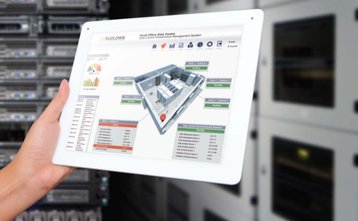Data Centre Infrastructure Management (DCIM) refers to a collection of technologies and products which work together to assist data centre operators with the management, running and cost calculation of their facility.
DCIM tools typically replace traditional Excel, Visio, and home grown databases and can help bridge information across a number of organisational departments including operations, facilities and IT. It’s worth noting that perhaps this is all that is needed, to a certain degree.
Deeper understanding
However, DCIM tools will generate a deeper understanding of a facility to allow data centre owners and operators to improve efficiency, increase the level of resiliency and reduce costs.
There are a wide range of DCIM solutions available, and no two solutions are the same. A well implemented DCIM solution must be carefully selected and tailored to meet the individual requirements of the organisation.
Different DCIM providers offer various packages, modules or bolt-ons, whilst some providers just have the one solution - which may or may not contain some of the following features generally attributed to DCIM.
- Power and environmental management
- Electrical and network cable mapping
- Real time event and alert management
- Capacity management
- Asset management
- Work order control
- Floor and cabinet visualization
- Real time PUE gauges
- Intelligent PDUs and environmental sensors
- Billing reports
The selection process
DCIM is a crowded market, with a reported seventy different providers all touting for business. It is debatable which of these can be considered true DCIM solutions as opposed to simple monitoring platforms. However, a considered selection process is highly important.
I’d recommend drawing up a list of what you actually need versus what you’d like. That way, it may be the case that a simple solution will give you everything you need right now, with an option to have what you’d like in the future. Choose a vendor who’s likely to still be around for the next several years; it’s likely you’ll need their auditing and technical support departments, as well as software/firmware updates and new feature releases in the future.
- Ideal
A correctly specified solution, providing exactly what the client wanted, without spending considerable time and expense on solutions that are too complex. - Flawed
Procuring an ‘all singing and dancing solution’, far too complex for the end user to understand, maintain and fully utilise. The result is an expensive database that’s unlikely to be of use.
Make a plan
Draw up a delivery road map with key milestones. This will ensure that the implementation process will be far easier and relatively pain free. You need to compile a Gap Analysis first to confirm the information you already have against the information you need. These audits could be achieved via one of your own internal resources or your chosen DCIM partners auditing service.
- Ideal
A well thought out and structured DCIM delivery plan. SMART measured timescales and budget allocations, resulting in a successful DCIM deployment. - Flawed
Underestimating the level of effort, time and potential additional costs attributed to DCIM deployment meaning that the project could be deferred before it’s even started.
Into the heart
A successful DCIM implementation must be suitably integrated within the heart of the data centres operational procedure. If it does, then all additions, moves and changes, for example, must all be applied via the correct change process and work management tool to ensure all information within the DCIM platforms database is kept wholly up to date.
Ideally DCIM implementation will be successfully integrated, consistently up to date and a key part of the data centres day to day operations. If not successfully integrated it will not be considered as a part of the change control procedure and therefore be out of date and underutilised.
Training
A successful DCIM implementation depends on thorough training. Extensive training must be provided to all persons that will have access to the data centre. This should be done in advance and should be kept up to date as new features become available, as a refresher for existing users; and to train new employees.
To achieve the best outcome all users must be trained, including new employees. With regular refresher training days, ensuring all users are confident in its use. Poor training delivered during and after the handover period will result in poor performances and limited access to the required information.
I would encourage you all to look at the best of DCIM. I do strongly believe that if DCIM is deployed and used correctly, it really can make dramatic improvements to a data centre’s productivity, capacity and overall efficiency; furthermore in doing so it really can achieve a timely ROI.


